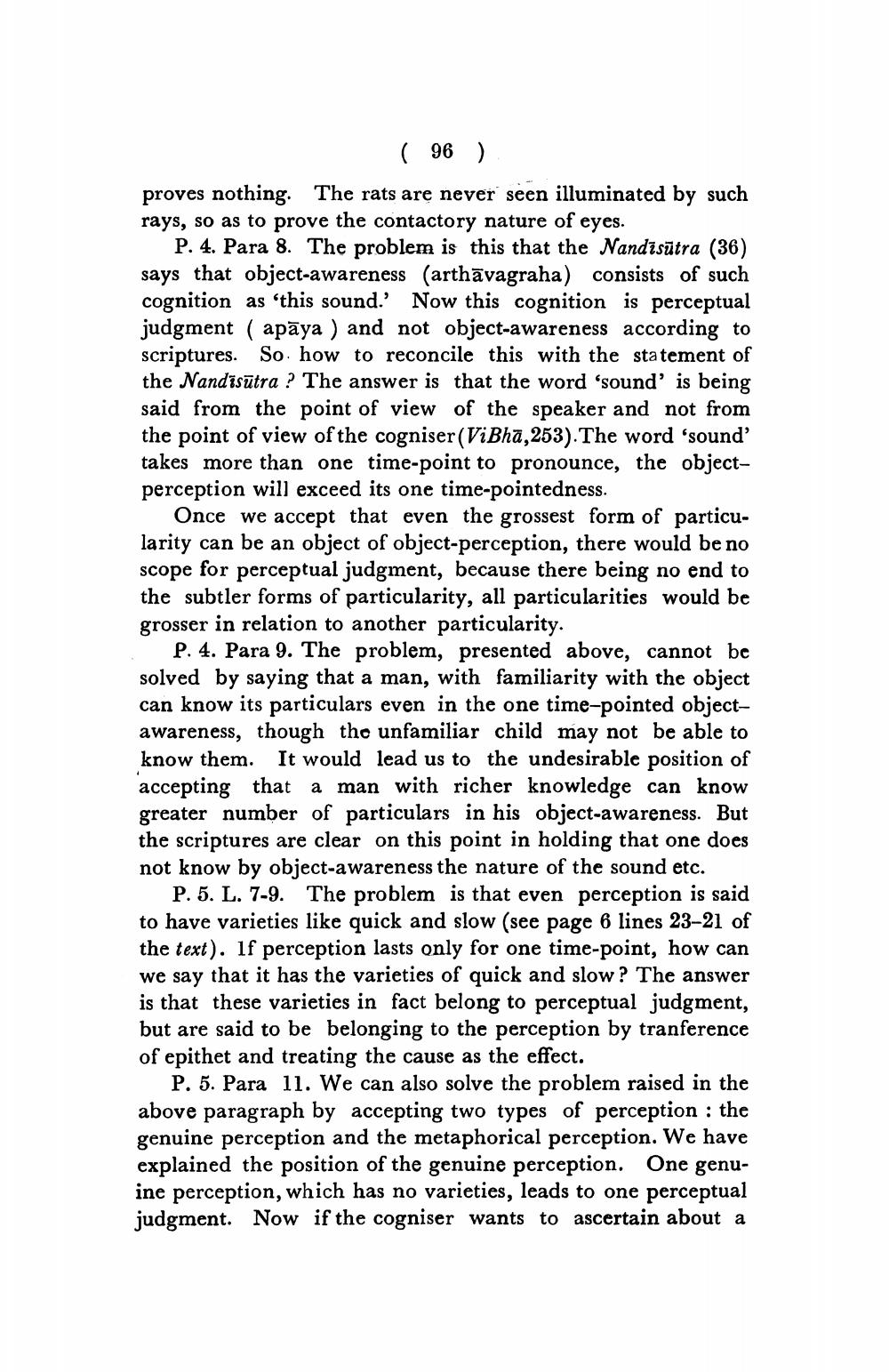________________
(
96
)
proves nothing. The rats are never seen illuminated by such rays, so as to prove the contactory nature of eyes.
P. 4. Para 8. The problem is this that the Nandisūtra (36) says that object-awareness (arthāvagraha) consists of such cognition as 'this sound.' Now this cognition is perceptual judgment (apāya ) and not object-awareness according to scriptures. So how to reconcile this with the statement of the Nandisātra ? The answer is that the word 'sound' is being said from the point of view of the speaker and not from the point of view of the cogniser(ViBha,253). The word 'sound' takes more than one time-point to pronounce, the objectperception will exceed its one time-pointedness.
Once we accept that even the grossest form of particularity can be an object of object-perception, there would be no scope for perceptual judgment, because there being no end to the subtler forms of particularity, all particularities would be grosser in relation to another particularity
P. 4. Para 9. The problem, presented above, cannot be solved by saying that a man, with familiarity with the object can know its particulars even in the one time-pointed objectawareness, though the unfamiliar child may not be able to know them. It would lead us to the undesirable position of accepting that a man with richer knowledge can know greater number of particulars in his object-awareness. But the scriptures are clear on this point in holding that one does not know by object-awareness the nature of the sound etc.
P. 5. L. 7-9. The problem is that even perception is said to have varieties like quick and slow (see page 6 lines 23–21 of the text). If perception lasts only for one time-point, how can we say that it has the varieties of quick and slow? The answer is that these varieties in fact belong to perceptual judgment, but are said to be belonging to the perception by tranference of epithet and treating the cause as the effect.
P. 5. Para 11. We can also solve the problem raised in the above paragraph by accepting two types of perception : the genuine perception and the metaphorical perception. We have explained the position of the genuine perception. One genuine perception, which has no varieties, leads to one perceptual judgment. Now if the cogniser wants to ascertain about a




